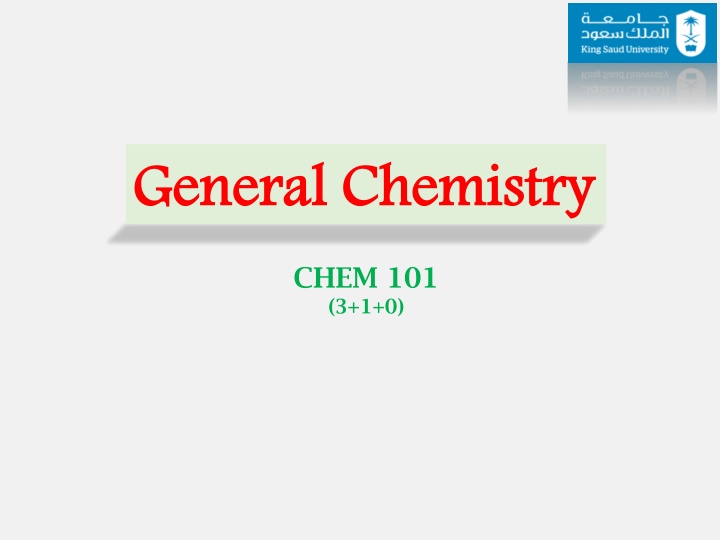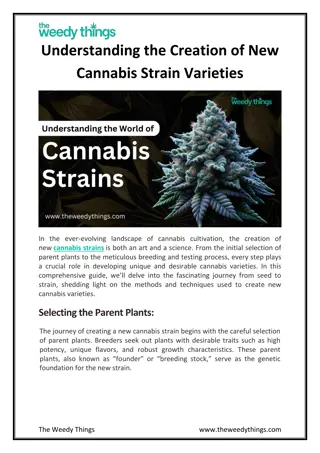
Understanding Thermochemistry and Thermodynamics
Explore the concepts of thermochemistry and thermodynamics, including energy changes in chemical reactions, exothermic and endothermic processes, state functions, and the first law of thermodynamics. Gain insights into how energy is converted and transferred in chemical systems.
Download Presentation

Please find below an Image/Link to download the presentation.
The content on the website is provided AS IS for your information and personal use only. It may not be sold, licensed, or shared on other websites without obtaining consent from the author. If you encounter any issues during the download, it is possible that the publisher has removed the file from their server.
You are allowed to download the files provided on this website for personal or commercial use, subject to the condition that they are used lawfully. All files are the property of their respective owners.
The content on the website is provided AS IS for your information and personal use only. It may not be sold, licensed, or shared on other websites without obtaining consent from the author.
E N D
Presentation Transcript
General Chemistry General Chemistry CHEM 101 (3+1+0)
Chapter 4 Thermochemistry
Energy Changes in Chemical Reactions Thermochemistry is the study of heat change in chemical reactions. The system is the specific part of the universe that is of interest in the study. The surroundings are the rest of the universe outside the system. closed energy isolated nothing open mass & energy Exchange:
Energy Changes in Chemical Reactions Exothermic process is any process that gives off heat transfers thermal energy from the system to the surroundings. 2H2(g) + O2(g) 2H2O (l) + energy H2O (g) H2O (l) + energy Endothermic process is any process in which heat has to be supplied to the system from the surroundings. energy + 2HgO (s) 2Hg (l) + O2(g) energy + H2O (s) H2O (l)
Energy Changes in Chemical Reactions Schematic of Exothermic and Endothermic Processes
Introduction to Thermodynamics Thermodynamics is the scientific study of the interconversion of heat and other kinds of energy. State functions are properties that are determined by the state of the system, regardless of how that condition was achieved. energy, pressure, volume, temperature E = Efinal - Einitial P = Pfinal - Pinitial V = Vfinal - Vinitial T = Tfinal - Tinitial Potential energy of hiker 1 and hiker 2 is the same even though they took different paths.
Introduction to Thermodynamics First law of thermodynamics - energy can be converted from one form to another, but cannot be created or destroyed. The transfer of energy from the system to the surroundings does not change the total energy of the universe. That is, the sum of the energy changes must be zero: Esystem + Esurroundings = 0 or Esystem = - Esurroundings If one system undergoes an energy change Esys , the rest of the universe, or the surroundings, must undergo a change in energy that is equal in magnitude but opposite in sign (- Esurr ); Chemical energy lost by combustion = Energy gained by the surroundings system surroundings C3H8 + 5O2 Exothermic chemical reaction! 3CO2 + 4H2O 7
Introduction to Thermodynamics Another form of the first law for Esystem E = q + w E is the change in internal energy of a system q is the heat exchange between the system and the surroundings w is the work done on (or by) the system w = -P V when a gas expands against a constant external pressure If a system loses heat to the surroundings or does work on the surroundings, its internal energy to decrease because those are energy-depleting processes; both q and w are negative. If heat is added to the system or if work is done on the system, the internal energy of the system would increase; both q and w are positive.
Introduction to Thermodynamics Work and Heat w = F x d w = -P V V > 0 -P V < 0 wsys < 0 F P x V = x d3 = F x d = w d2 Work is not a state function. w = wfinal - winitial initial final The units for work done by or on a gas are liters atmospheres. 1 L . atm = 101.3 J
Introduction to Thermodynamics A sample of nitrogen gas expands in volume from 1.6 L to 5.4 L at constant temperature. What is the work done in joules if the gas expands (a) against a vacuum and (b) against a constant pressure of 3.7 atm? w = -P V V = 5.4 L 1.6 L = 3.8 L (a) P = 0 atm W = -0 atm x 3.8 L = 0 L atm = 0 joules V = 5.4 L 1.6 L = 3.8 L (b) P = 3.7 atm w = -3.7 atm x 3.8 L = -14.1 L atm w = -14.1 L atm x 101.3 J 1L atm= -1430 J
Enthalpy of Chemical Reactions Enthalpy and First law of thermodynamics; If a chemical reaction is run at constant volume, then V = 0 E = q + w E = q - P V E = qv Enthalpy A new thermodynamic function of a system called enthalpy ( H ) H = E + PV At constant pressure: E = qp- P V q = H and w = -P V E = H - P V H = E + P V
Enthalpy of Chemical Reactions Enthalpy of Chemical Reactions For any reaction of the type Reactants products Enthalpy (H) is used to quantify the heat flow into or out of a system in a process that occurs at constant pressure. Enthalpy of reaction, H, as the difference between the enthalpies of the products and the enthalpies of the reactants: H = H (products) H (reactants) H = heat given off or absorbed during a reaction at constant pressure
Enthalpy of Chemical Reactions Enthalpy of Chemical Reactions oFor an endothermic process oFor an exothermic process H is positive (that is, H > 0). H is negative (that is, H < 0). Hproducts < Hreactants Hproducts > Hreactants
Enthalpy of Chemical Reactions Thermochemical Equations Thermochemical equations, which show the enthalpy changes as well as the mass relationships. Is H negative or positive? System absorbs heat Endothermic H > 0 6.01 kJ are absorbed for every 1 mole of ice that melts at 00C and 1 atm. H = 6.01 kJ/mol H2O (s) H2O (l)
Enthalpy of Chemical Reactions Thermochemical Equations Is H negative or positive? System gives off heat Exothermic H < 0 890.4 kJ are released for every 1 mole of methane that is combusted at 250C and 1 atm. H = -890.4 kJ/mol CH4(g) + 2O2(g) CO2(g) + 2H2O (l)
Enthalpy of Chemical Reactions Thermochemical Equations o The stoichiometric coefficients always refer to the number of moles of a substance H = 6.01 kJ/mol H2O (s) H2O (l) o If you reverse a reaction, the sign of H changes H = -6.01 kJ/mol H2O (l) H2O (s) o If you multiply both sides of the equation by a factor n, then H must change by the same factor n. H = 2 x 6.01 = 12.0 kJ 2H2O (s) 2H2O (l)
Enthalpy of Chemical Reactions Thermochemical Equations o The physical states of all reactants and products must be specified in thermochemical equations. H = 6.01 kJ/mol H2O (s) H2O (l) H = 44.0 kJ/mol H2O (l) H2O (g) How much heat is evolved when 266 g of white phosphorus (P4) burn in air? P4(s) + 5O2(g) P4O10(s) H = -3013 kJ/mol 1 mol P4 123.9 g P4 3013 kJ 1 mol P4 x x = 6470 kJ 266 g P4
Enthalpy of Chemical Reactions A Comparison of H and E 2Na (s) + 2H2O (l) 2NaOH (aq) + H2 (g) H = -367.5 kJ/mol E = H - P V At 25 oC, 1 mole H2 = 24.5 L at 1 atm P V = 1 atm x 24.5 L = 2.5 kJ E = -367.5 kJ/mol 2.5 kJ/mol = -370.0 kJ/mol The reason H is smaller than E in magnitude is that some of the internal energy released is used to do gas expansion work, so less heat is evolved.
Enthalpy of Chemical Reactions A Comparison of H and E To calculate the internal energy change of a gaseous reaction is to assume ideal gas behavior and constant temperature
Calorimetry: specific heat and heat capacity The specific heat (s) of a substance is the amount of heat (q) required to raise the temperature of one gram of the substance by one degree Celsius. The heat capacity (C) of a substance is the amount of heat (q) required to raise the temperature of a given quantity (m) of the substance by one degree Celsius. C = m x s Heat (q) absorbed or released: q = m x s x t q = C x t t = tfinal - tinitial
Calorimetry: specific heat and heat capacity How much heat is given off when an 869 g iron bar cools from 94oC to 5oC? s of Fe = 0.444 J/g oC t = tfinal tinitial = 5oC 94oC = -89oC q = ms t = 869 g x 0.444 J/g oC x 89oC = -34,000 J
Standard Enthalpy of Formation and Reaction Because there is no way to measure the absolute value of the enthalpy of a substance, must I measure the enthalpy change for every reaction of interest? Establish an arbitrary scale with the standard enthalpy of formation ( H0) as a reference point for all enthalpy expressions. f Standard enthalpy of formation ( H0) is the heat change that results when one mole of a compound is formed from its elements at a pressure of 1 atm. f The standard enthalpy of formation of any element in its most stable form is zero. H0 (C, graphite) = 0 f H0 (O2) = 0 f H0 (O3) = 142 kJ/mol f H0 (C, diamond) = 1.90 kJ/mol f
Standard Enthalpy of Formation and Reaction The standard enthalpy of reaction( H0 ) is the enthalpy of a reaction carried out at 1 atm. rxn aA + bB cC + dD a H0 (A) b H0 (B) H0rxn c H0 (C) d H0 (D) ] - [ + ] = [ + f f f f m H0 (reactants) f H0rxn n H0 (products) f = -
Standard Enthalpy of Formation and Reaction The direct Method o Suppose we want to know the enthalpy of formation of carbon dioxide. o We must measure the enthalpy of the reaction when carbon (graphite) and molecular oxygen in their standard states are converted to carbon dioxide in its standard state: m H0 (reactants) f H0rxn n H0 (products) f - =
Standard Enthalpy of Formation and Reaction The Indirect Method (Hess s Law) oMany compounds cannot be directly synthesized from their elements. oThe reaction proceeds too slowly, or side reactions produce substances other than the desired compound. Hess s Law: When reactants are converted to products, the change in enthalpy is the same whether the reaction takes place in one step or in a series of steps. (Enthalpy is a state function. It doesn t matter how you get there, only where you start and end.)
Standard Enthalpy of Formation and Reaction Let s say we are interested in the standard enthalpy of formation of carbon monoxide (CO). However, burning graphite also produces some carbon dioxide (CO2), so we cannot measure the enthalpy change for CO directly. We must employ an indirect route, based on Hess s law. It is possible to carry out the following two separate reactions: First, we reverse Equation (b) to get we carry out the operation (a) + (c) and obtain
Standard Enthalpy of Formation and Reaction C (graphite) + 1/2O2(g) CO (g) CO (g) + 1/2O2(g) CO2(g) C (graphite) + O2(g) CO2(g) 30
Benzene (C6H6) burns in air to produce carbon dioxide and liquid water. How much heat is released per mole of benzene combusted? The standard enthalpy of formation of benzene is 49.04 kJ/mol. 2C6H6(l) + 15O2(g) 12CO2(g) + 6H2O (l) m H0 (reactants) f H0rxn n H0 (products) f = - H0rxn 2 H0 (C6H6) f 12 H0 (CO2) f 6 H0 (H2O) f ] - [ ] = [ + H0rxn= [ 12x 393.5 + 6x 187.6 ] [ 2x49.04 ] = -5946 kJ -5946 kJ 2 mol = - 2973 kJ/mol C6H6
Some types of Endothermic and exothermic physical changes and chemical reactions (Enthalpy of fusion, vaporization) 32
Molar heat of vaporization (Hvap) is the energy required to vaporize 1 mole of a liquid at its boiling point. Clausius-Clapeyron Equation Hvap RT P = (equilibrium) vapor pressure ln P = - + C T = temperature (K) R = gas constant (8.314 J/K mol) Vapor Pressure Versus Temperature 33
Molar heat of fusion (Hfus) is the energy required to melt 1 mole of a solid substance at its freezing point. 34





















